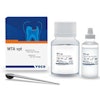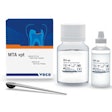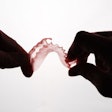For this week's clinical tip from CDOCS, Dr. Diwakar Kinra has some advice on how to help dental patients who present with extreme pain and swelling in your practice.
Video transcript
"Hi. My name is Diwakar Kinra, and I'm endodontic faculty here at CDOCS, and my tip of the day has to do with patients who come in with major swelling.
"Now when you're looking at swelling, and you need to be really specific about the diagnosis, you need to think about two different things: a pulpal diagnosis and a periapical diagnosis.
"Let's concentrate, actually, on the periapical diagnosis. Now if you look down this decision tree, you'll see that look at percussion, is there pain or no pain? If there's pain, you have to look if there's swelling. There's 'no' and 'yes,' and if there's 'yes,' that's really an acute apical abscess, and those types of patients who are in the most extreme pain, they're going to end up in your office. And I feel these are the patients you actually need to do something on.
"OK, so let's talk about that. There's a couple of different ways to treat it. You know, some people will just give an antibiotic and send the patient away, because you could really only give an antibiotic if there's fluctuant, swelling, lymphadenopathy, maybe even a fever. But in those cases, I really want to do something for the patient that day.
"So that day, what I'm going to do is I'm going to do an incision drain. Now in an incision drain, some of us, you know this, will just poke at that, you know, large swelling and hope we get something out of it, but I go one step further. And then one step further is I'm going to go ahead and make an incision with a No. 15 blade, and then I'm going to go ahead and use some blunt dissection with maybe a hemostat. And in reality, I really want to get a lot of exudate out of that swelling.
"Then I'm going to go ahead and suture some sterile rubber dam material into the lesion so that drainage can occur over the next maybe 24 to 48 hours. I usually bring the patient back in about 48 hours, and I check them to see how much drainage has actually occurred, and when that's the case, and I feel better about it, then I'm gonna probably either start the root canal or at least take the rubber dam material out, and they're gonna feel a ton better.
"So this is what I would do if a patient came in with extreme swelling, do an IND and do it in this fashion. Thanks."



















